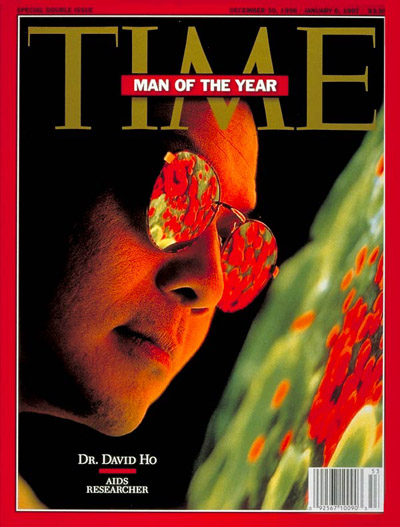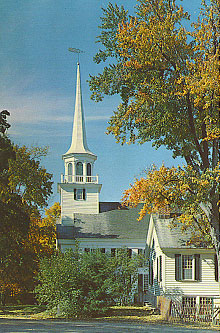|
The stories covered by the Wilton Bulletin simply supported my thoughts
that AIDS was a problem that existed outside of my hometown. While many
articles could be found in the first section of the newspaper, only one
found a spot on the front page. This article, published on September 8th
of 2005, focused in part on the voyage of two volunteers on a missionary
trip to Africa (1).
Similarly, many other articles (such as “Photos by Kenyan AIDS Orphans
Will be On Display”
[3
February 2005] (10)
and “Friends School Takes Global Perspective” [9 November 2006] (3))
were inspired by stories of AIDS cases that existed thousands of miles
away. Additional articles focused on the generosity and philanthropy of
various groups or citizens throughout the community. Stories including
“Cider Mill Students Give A Gift of ‘Hearts and Hands’” [26 May 2005] (2)
and the obituary for Philip Gethin-Jones (a businessman who fought
against AIDS in Africa) [18 August 2005] (9)
provide examples of such compassion for AIDS victims and further
indicate that the AIDS problem is elsewhere- certainly not in Wilton.

http://img.timeinc.net/time/magazine/archive/covers/1996/1101961230_400.jpg
Articles from Time Magazine (my favorite news publication)
also directed my attention concerning AIDS away from Fairfield County.
In 1996, Time named David Ho its Person of the Year and published a
lengthy article highlighting his advances in the battle to counter AIDS
(4).
Over the ensuing years (1999 and onward), Time Magazine followed the
story out of America and into Asia. In September of 2002, the report
“Stalking a Killer” traced AIDS’s development in provincial China (8).
Just a over a year later, Time checked back in with Dr. Ho who, by that
time had “…largely quelled the AIDS epidemic in the U.S. and Europe” (6)
and had moved on to address the issue in China, which is, according to
Time in 2002, “…predicted to become the next hot spot[s] of the
disease.” (12)
This talk of the AIDS issue occurring overseas again bolstered my
opinion that it was not one that afflicted Wilton, Connecticut.
The New York Times is also widely read across Fairfield County, as many
workers commute to the City each day. I sampled several articles
spanning in publication date from 1999 to 2007 and again noticed that
they did not apply to any categories I (or, for that matter, any of my
neighbors) might belong to. Two articles, published on January 1st
and 2nd of 1999 covered the story of the Gay Men’s
Health Crisis’ (G.M.H.C) cancellation of their annual fundraising party
on Fire Island (11
and
14). Articles such as these established that AIDS was a disease that
affected homosexuals. Moreover, the articles noted that the party was
halted due to “...illegal drug use and unsafe sex” (14),
neither of which are known to plague Wilton, Connecticut, but might
affect lower income areas such as Bridgeport, Stamford and parts of
Norwalk. Another particularly informative article, published in 2001,
mentioned Bridgeport in its story quite extensively. “Addict’s Suit
Claims Police Ignore Needle-Swap Laws” highlighted the troubles of
running needle-swap exchange programs (which attempt to head off AIDS by
eliminating transmission through shared needles) in the face of police
who wish to crack down on drug use (7).
Additionally, several articles (such as “Alone in a City’s AIDS Battle,
Hoping for Backup”, which made the front page of the New York Times in
2007 (13))
noted that AIDS is a problem found predominantly in the black community.
In sum, the media fully supported my assertions that AIDS
was not a problem in Wilton. Consequently, it made sense to wager that
some surrounding towns (such as Bridgeport, Stamford and/or Norwalk)
would have higher rates of AIDS, as they had, I assume, higher
concentrations of minorities and drug users. However, my prediction of
200 cumulative cases in Norwalk (a city abutting my town) was quite
inaccurate. An unexpected 507 cumulative cases arose in the past twenty
years in the city (Table
1.1).
The media can be blamed partly for this
phenomenon. In the New York Times, while many articles made the front
section of the paper, hardly any could be found on the front page. Time
Magazine articles covering AIDS tend to end on a positive and uplifting
note. For example: “…the worst fear—the one that seeded a decade with
despair, the foreboding sensing that the AIDS virus might be invincible-
has finally been subdued.” (4)
Finally, The Wilton Bulletin can be accused of printing “warm and fuzzy”
versions of AIDS, insofar as they focused on volunteer and philanthropic
efforts, thereby distancing the problem from my neighborhood.
CONTINUE.
HOME. |



